The Spineback Trail starts at Island Lake Lodge west of Fernie, switchbacking up through the lush mossy woods before following a talus slope up into the Lizard Range. Just before reaching Papa Bear Peak, the trail leads up onto the narrow Spineback Ridge which overlooks all of the Cedar Valley. From here it’s possible to look down at Island Lake, or across the valley towards the Three Sisters and Mt Fernie. Views to the east of Fernie and Morrissey Ridge behind are possible as well. The Spineback Trail is one of the easiest hikes in Fernie with mountain views, and usually takes most hikers not too much more than an hour each way.
Many of Fernie’s best hiking trails are located on Island Lake Lodge’s incredible 7000-acre property close to town, including the Spineback Trail. A team of trail workers maintains the trails, and public access is permitted to hikers free of charge. Aside from a variety of trails for all difficulty levels, Island Lake Lodge is also home to the Tamarack Dining Room and the Bear Bistro – a great spot for enjoying a beer post-hike. 😉 There’s also a small gift shop located inside the Bear Bistro.
Continue reading this blog post for everything you need to know to hike the Spineback Trail at Island Lake Lodge in Fernie for yourself, including distance, elevation gain, how to get there, the best time to visit, and lots of photos of my experience.
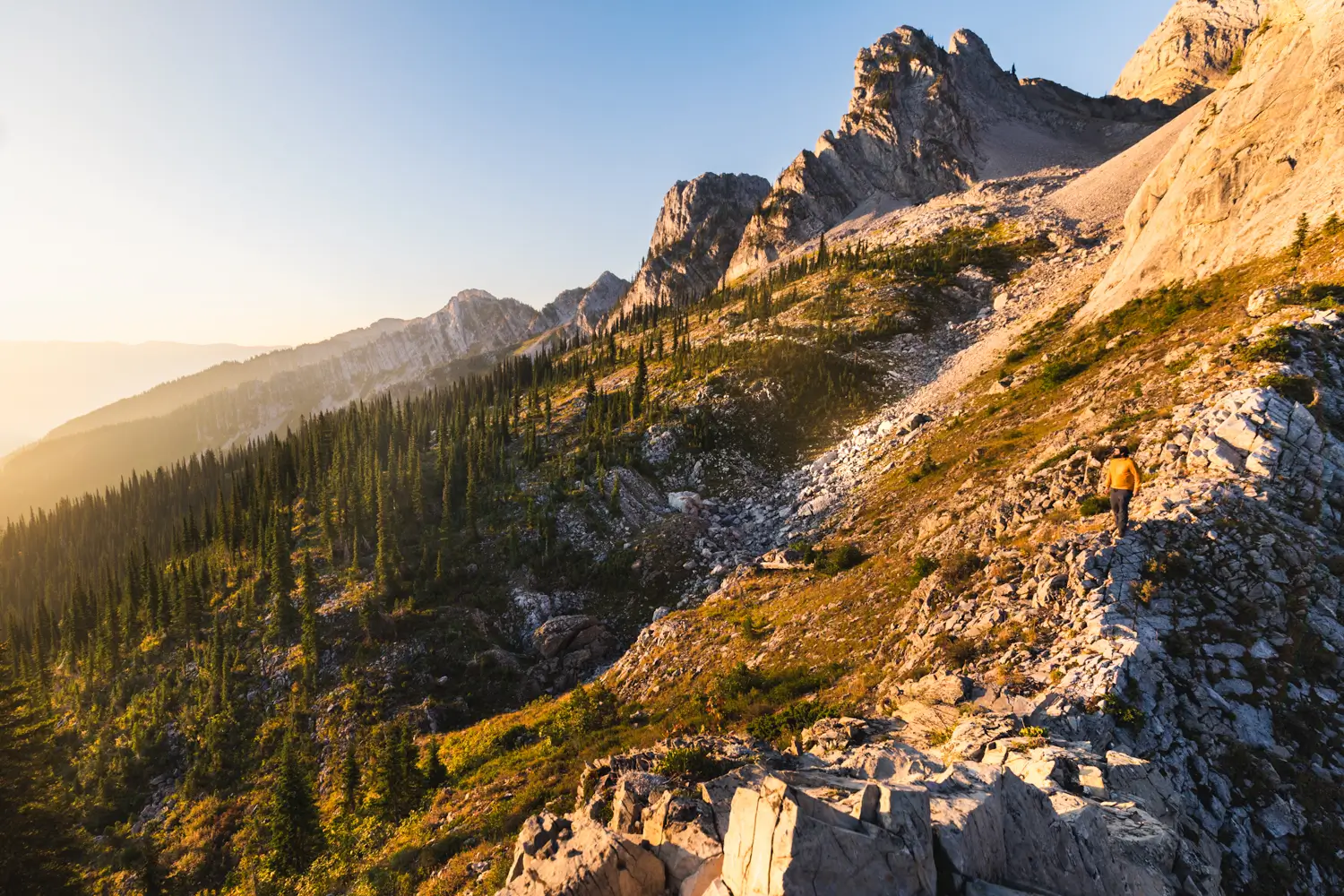
When hiking it’s important to avoid harmful practices such as disturbing plants or rock-stacking, or removing any natural object from flowers to rocks, as it’s important to leave the environment as natural as possible for the animals and for fellow hikers to enjoy in perpetuity. As many flowers as there are, there are few enough that if we all took one, then there wouldn’t be any left. Take only photos, leave only footprints.
If you haven’t heard of Leave No Trace principles, they’re also really essential to read up on before heading anywhere into the outdoors in general. Following these important principles basically means doing your best to leave beautiful places like the Spineback Trail as good (if not better) than you found them, both for their preservation and for the enjoyment of other visitors.
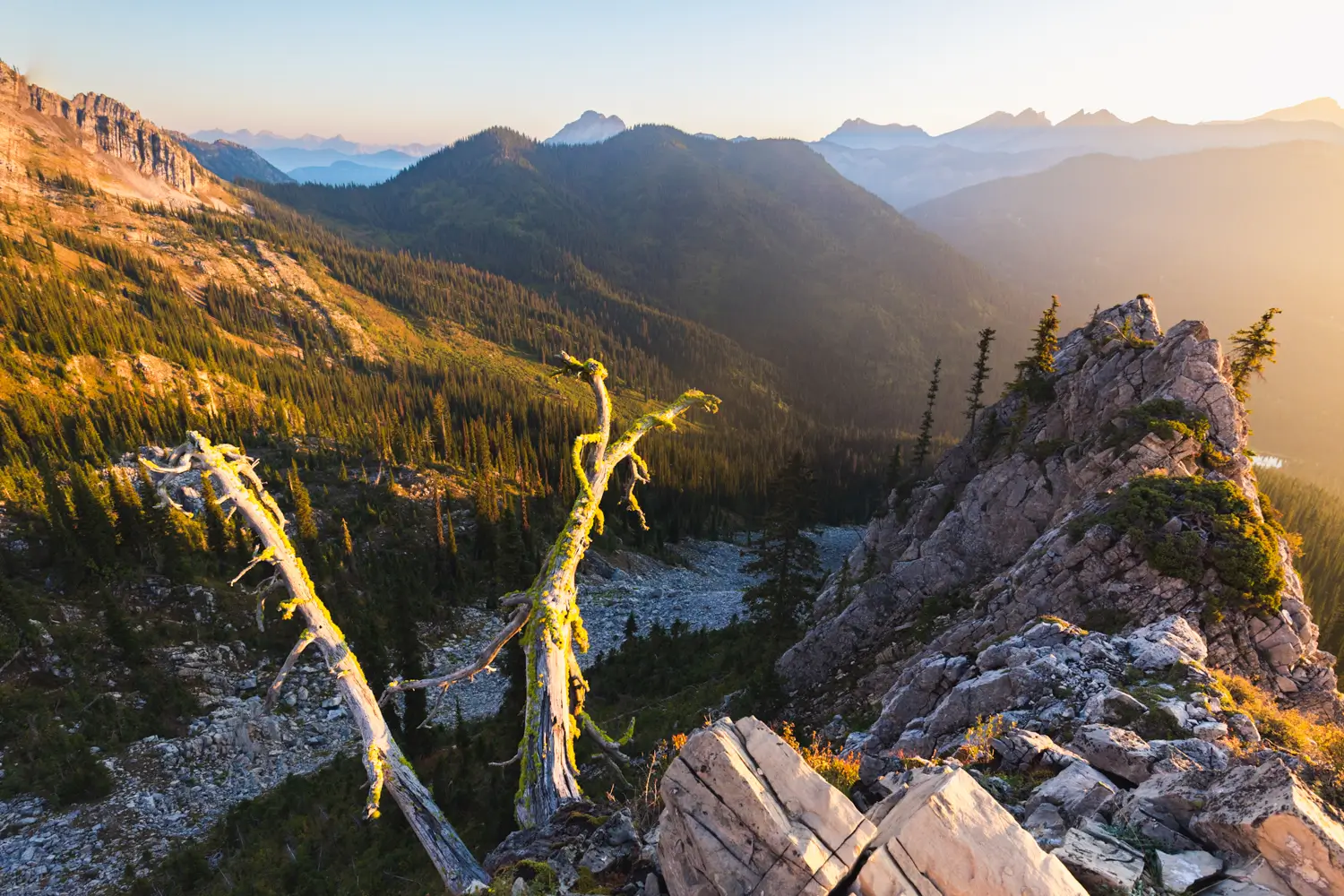
Spineback Trail Round Trip Details
Distance: 3.6KM / 2.2 MI
Elevation Gain: 520 M / 1706 FT
Hiking Time: 2-3 HRS
Hiking & Safety Tips
- Prepare for the possibility of wildlife encounters. Bear spray is a must whenever travelling in bear country, as well as learning how to use it. Though your chance of an aggressive bear encounter is low, it is always better to be prepared with bear spray. Bear bells are proven to be an ineffective bear deterrent, and are actively discouraged by Parks Canada. The best way to let bears know you’re around is simply to use your voice. Make sure to keep a respectful distance from wildlife and never feed the animals. It may seem kind but it doesn’t just kill wildlife and put people in danger, it’s also in many cases illegal.
- Research current trail conditions and make sure you are well-informed about the route before you leave, and assess if it is within your capability. Be aware of what time it gets dark and check the weather forecast. Make sure to tell someone where you’re going and when you expect to return. Every year as more and more people try hiking for the first time, the number of rescues goes up. Being prepared is the best defense.
- Pack everything you need for a successful hike, including enough water and energy-rich snacks. Remember to pack out everything you pack in though – don’t expect to find a convenient garbage can halfway up the trail. Bring appropriate layers (remember you’ll warm up once you start hiking) and sun protection. Hiking poles may be helpful but are not required. In addition to not leaving any garbage on the trail yourself, I highly recommend bringing a garbage bag and collecting any trash that you do see on the trail. You’re guaranteed to make the hike along the Spineback Trail a more enjoyable experience for the next person.
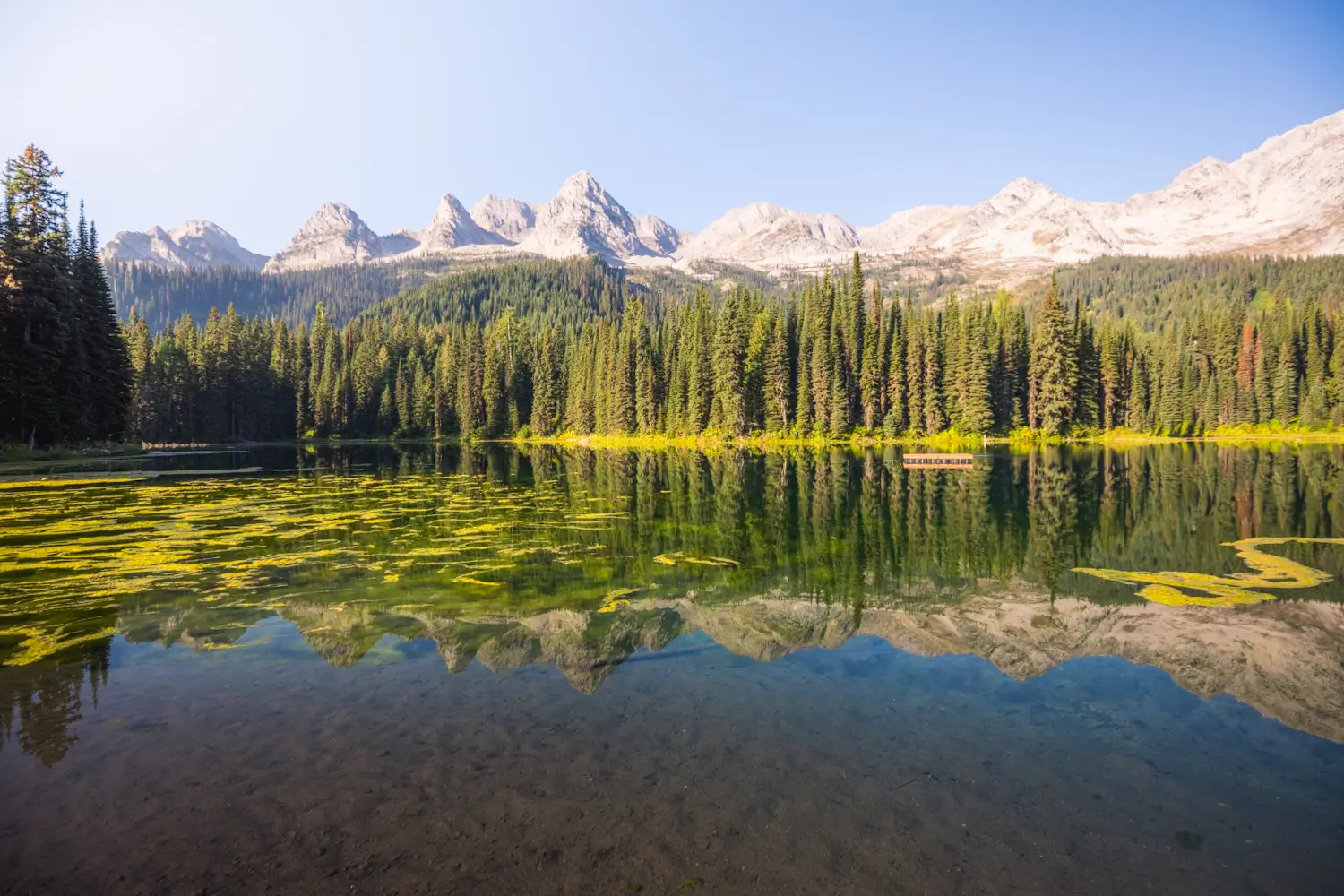
How to Get to Island Lake Lodge
Island Lake Lodge is located about half an hour from Fernie up the neighbouring Cedar Valley. Drive south out of Fernie via the Crowsnest Highway for about five minutes, turning right onto Mt Fernie Park Road. The intersection is well marked with signs for both Island Lake Lodge and Mt Fernie Provincial Park. Follow the road straight as it passes through Mt Fernie Provincial Park and winds through the woods up to Island Lake Lodge Provincial Park. The road to access Island Lake Lodge is only accessible June to September during days the lodge is operational. Check their operations calendar to plan ahead and make sure the road will be open during your visit.
Click here to open the exact trailhead location in Google Maps.
Hiking the Spineback Trail
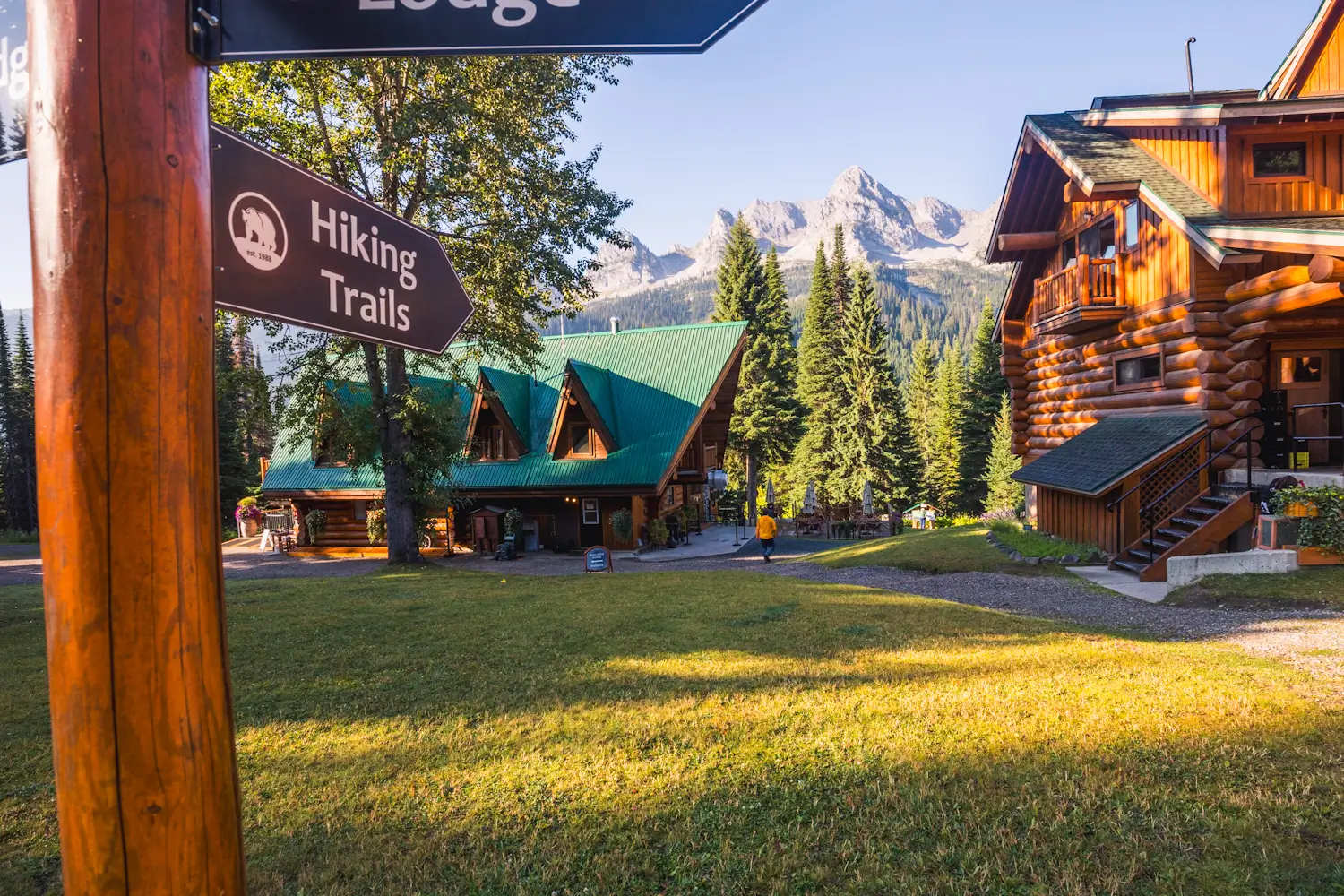
Following the footpath past Bear Bistro and the Tamarack Dining Room down towards the lake.
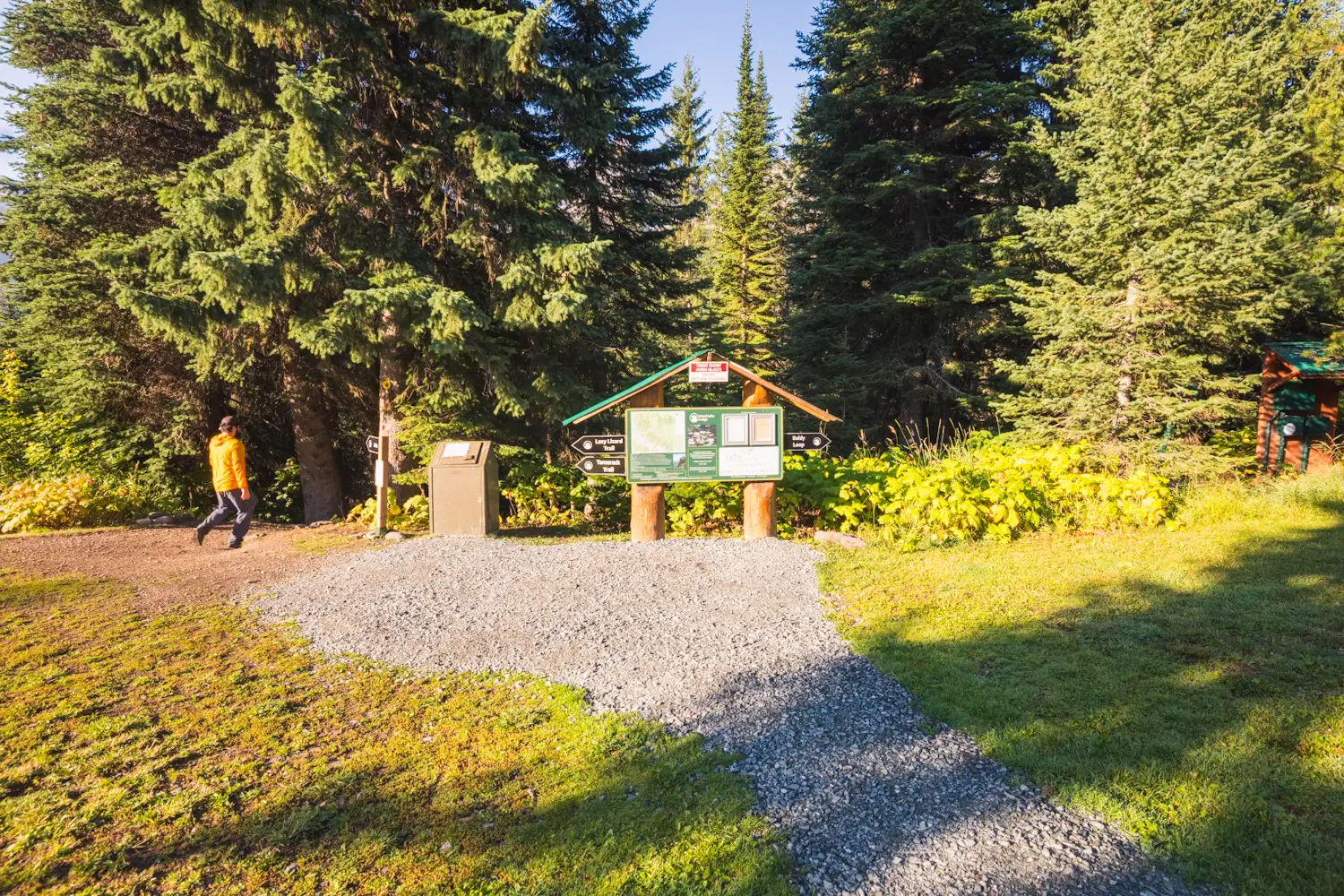
A large signboard marks the start of several different Island Lake Lodge hikes. Head down behind the sign on the left to begin walking the Lake Trail counterclockwise.

The Lake Trail is mostly wooded as it winds around the edge of Island Lake, though there are a couple of fantastic viewpoints of the lake and the Lizard Range spreading out behind it as seen here. The three distinct peaks at left are Mama Bear, Baby Bear, and Papa Bear. Spineback Ridge is the rocky outcrop directly in front of Papa Bear, and the end of the Spineback Trail hike.
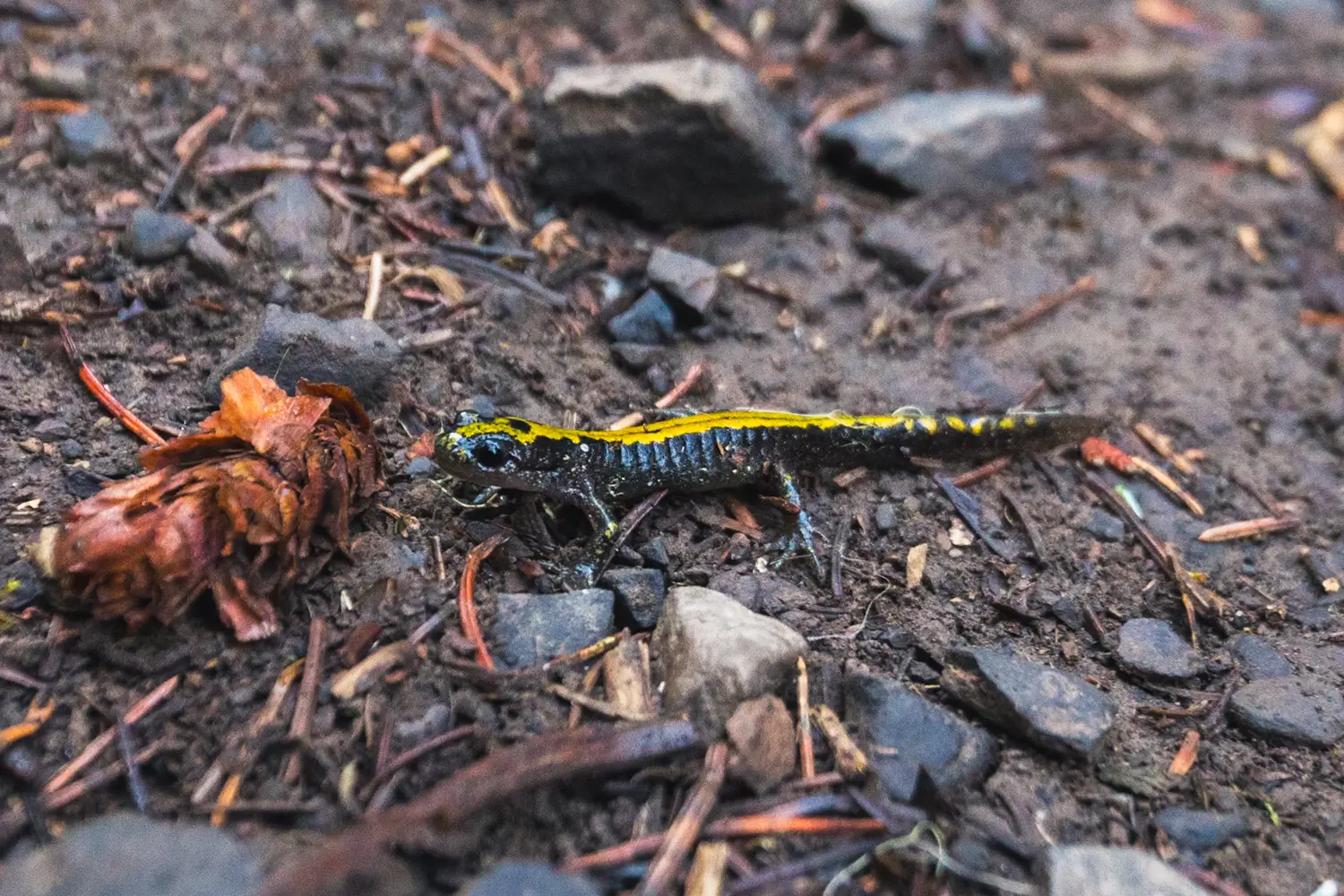
A Long-toed Salamander was posing still right on the middle of the trail for me. Apparently they’re pretty common all throughout BC and as far south as California, but this was the first one I’ve seen. In 1874 prospector and trapper Michael Phillips named Lizard Creek for the abundance of these salamanders, and that’s where the Lizard Range gets its name as well.
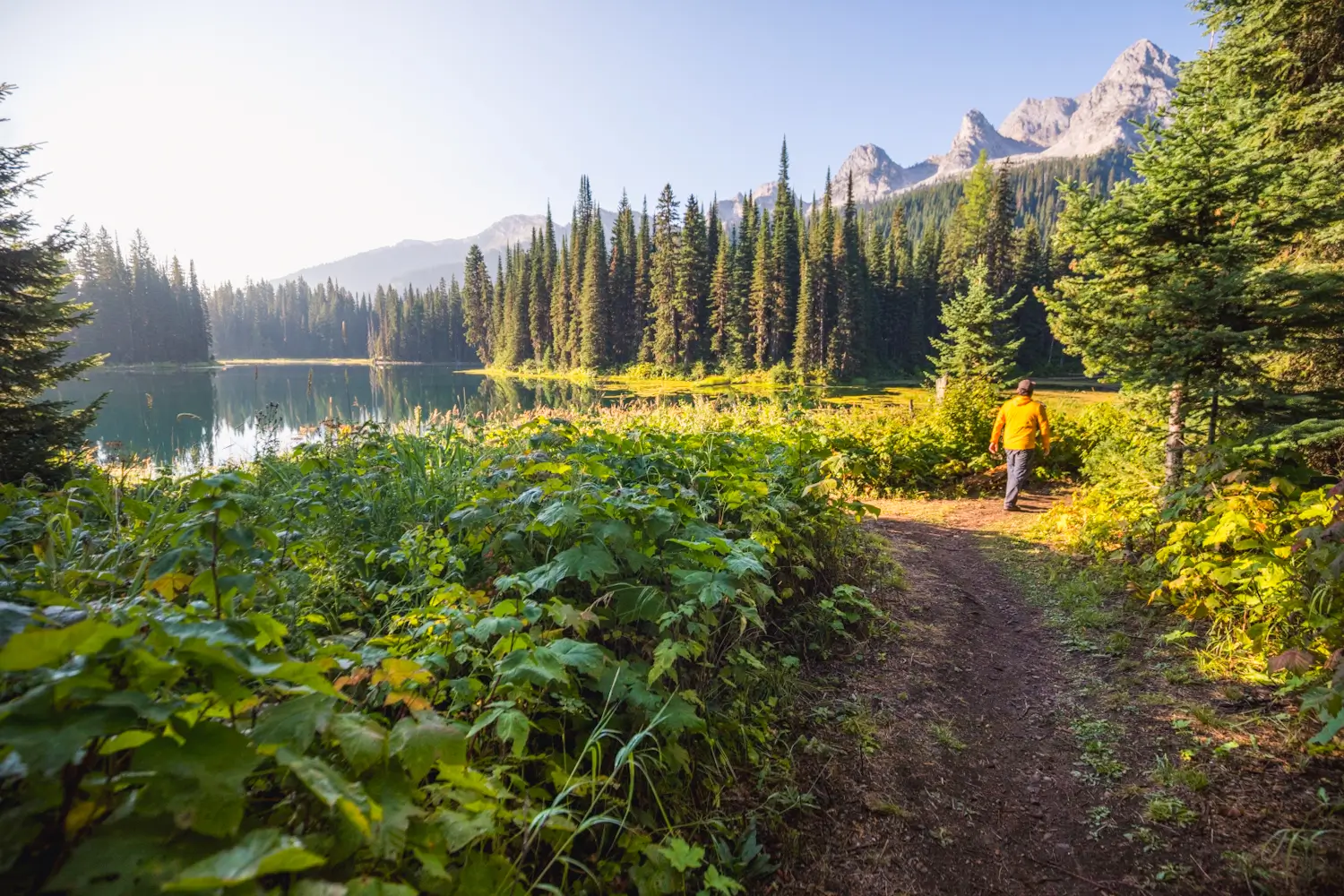
More excellent views over Island Lake and the Three Bears above.
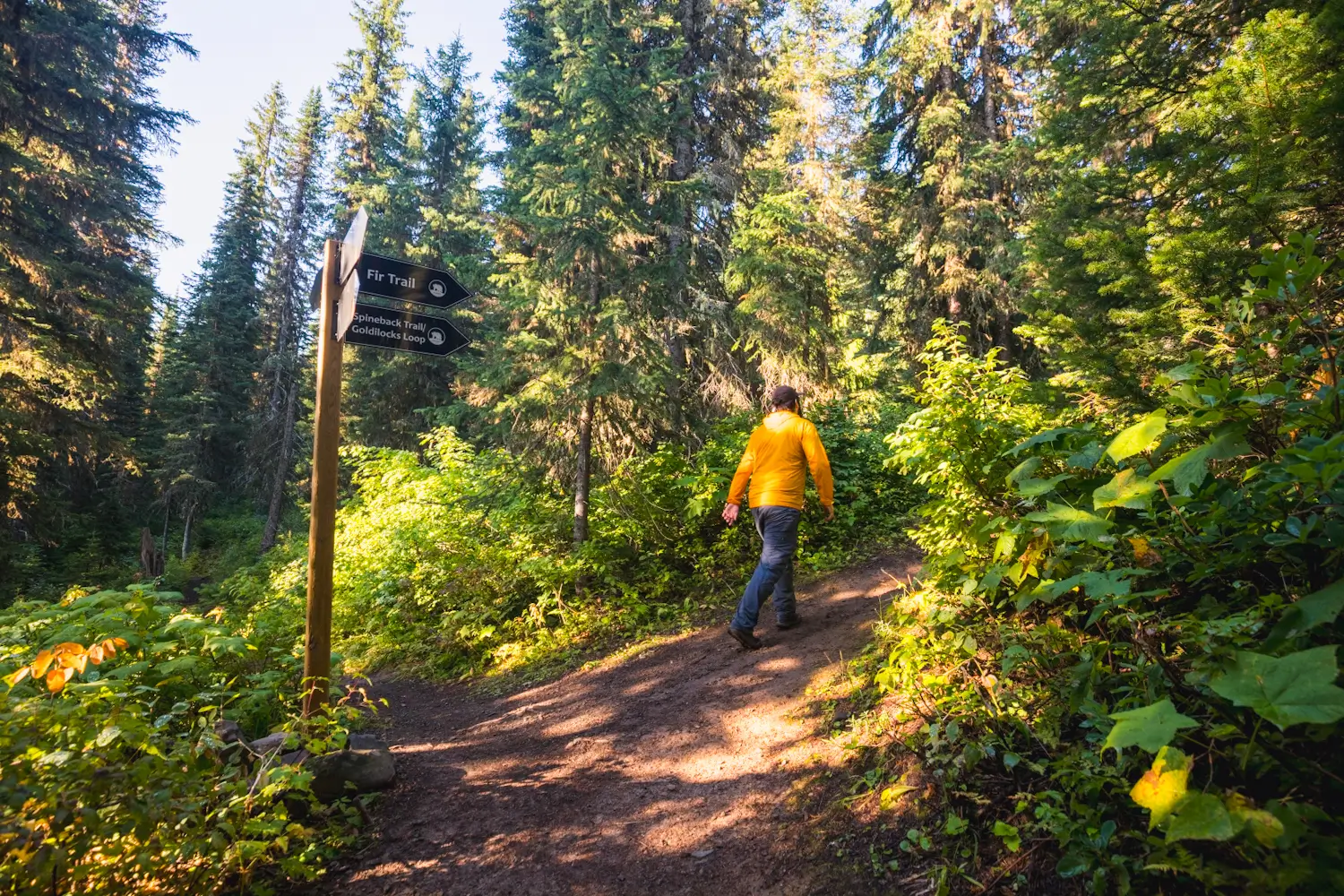
After about 500m, I turned off of the Lake Trail and followed signs for the Spineback Trail. The Lake Trail is a loop around the lake so on the way back it’s possible to continue the rest of the loop back to the lodge.
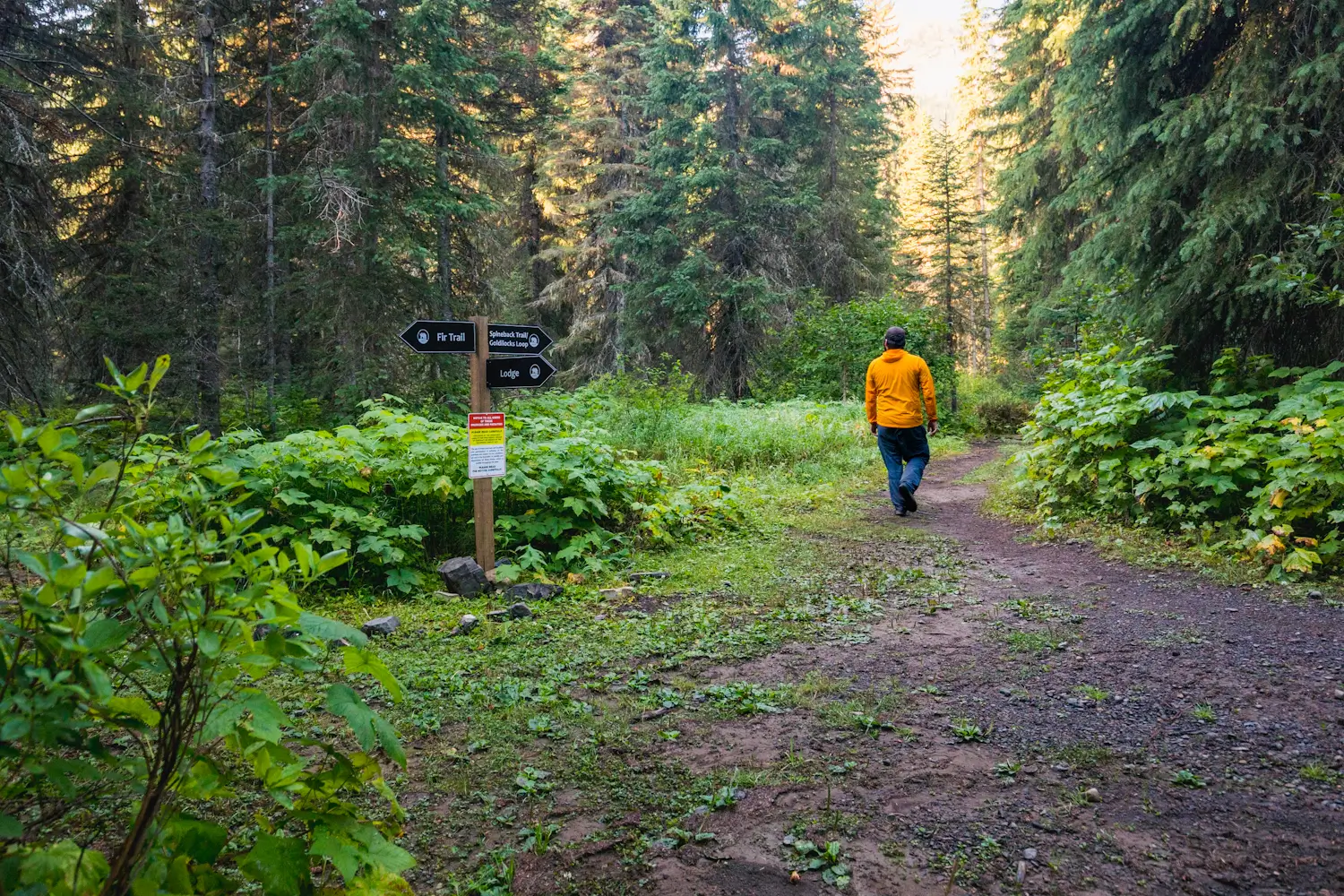
More signs for the Spineback Trail.
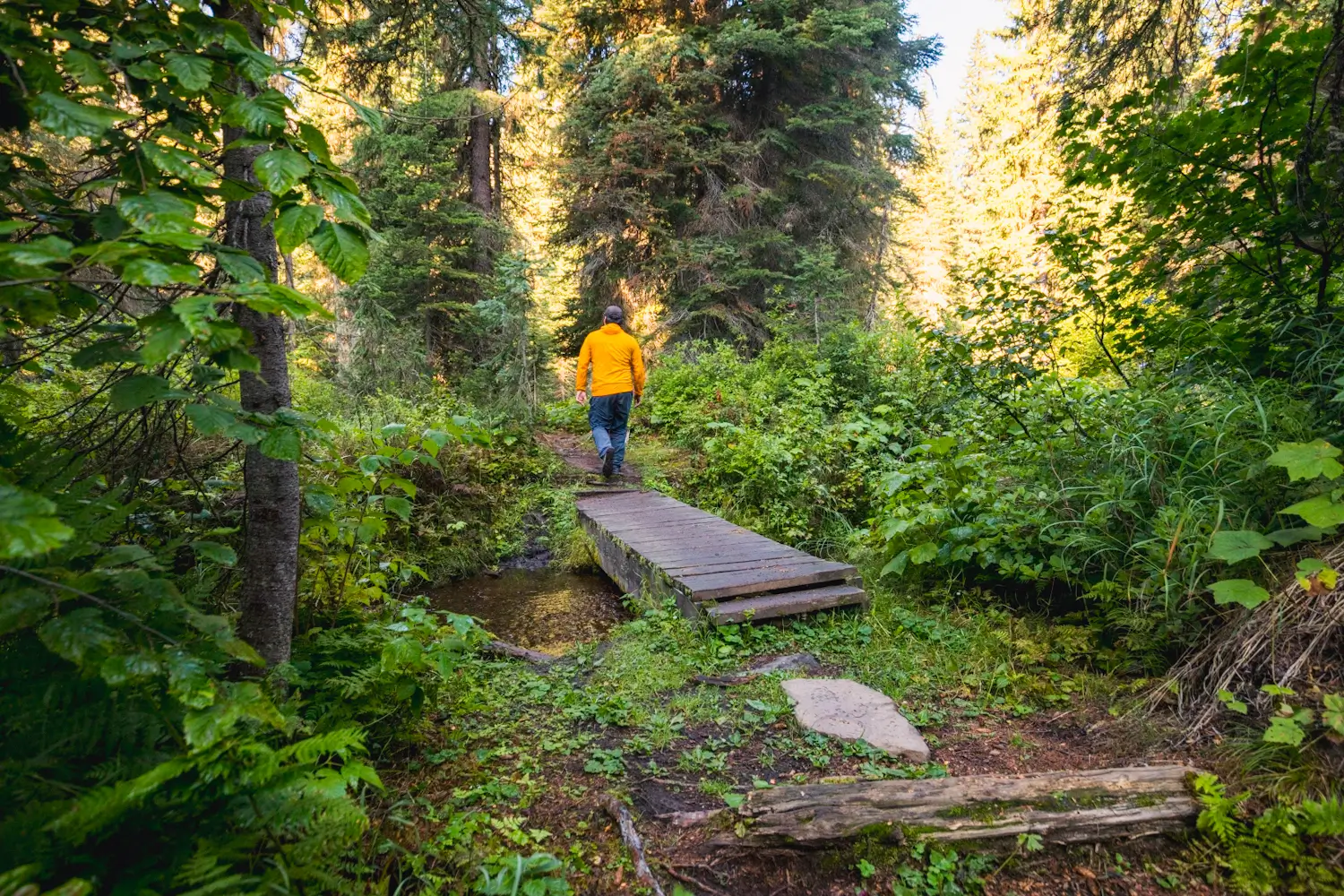
For another half-kilometre after leaving the Lake Trail the trail is fairly flat as it makes its way through the wet forest, crossing over a couple of small streams.

Once the trail abruptly starts switchbacking up the mountainside it doesn’t stop, so hopefully you’ve enjoyed the flat sections while they lasted.
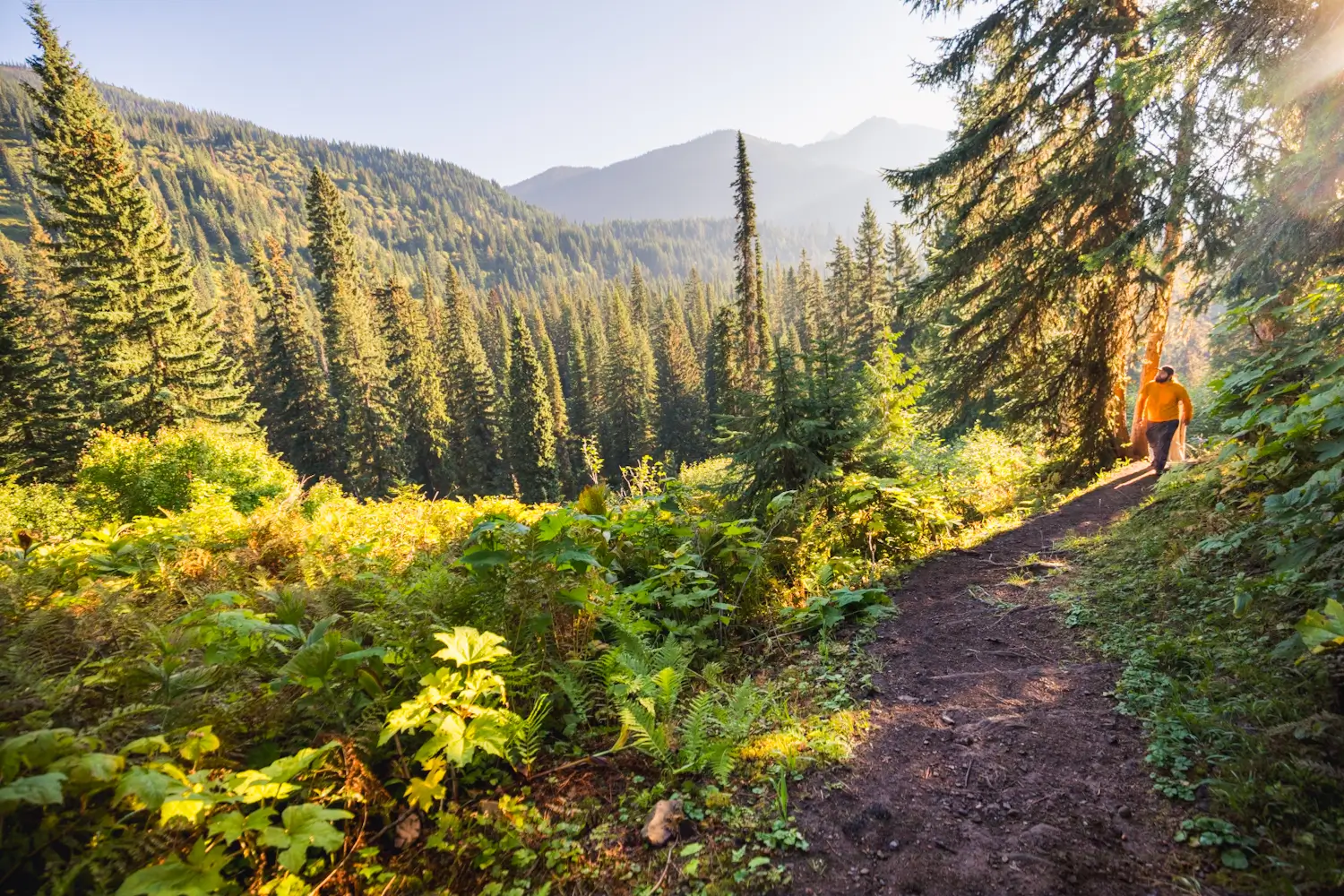
Views from the Spineback Trail back into the Cedar Valley. The forested mountain at left is Bald Mountain. Across the valley is the ridge leading up to the Tamarack Lookout and Mt Fernie
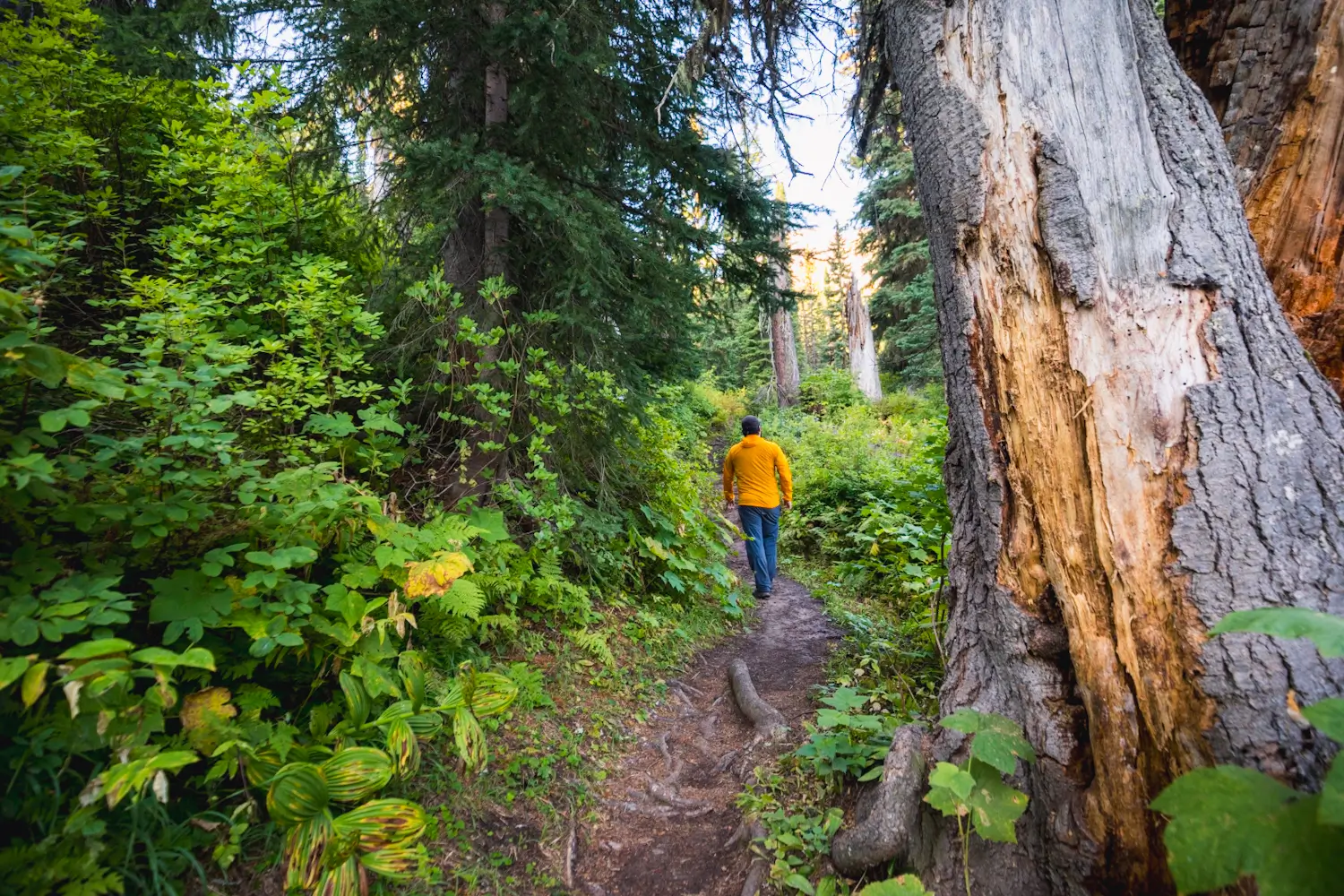
There are a couple of large old-growth trees on the trail, but the biggest trees in the area can be found on the Old-Growth Trail, also maintained by Island Lake Lodge.
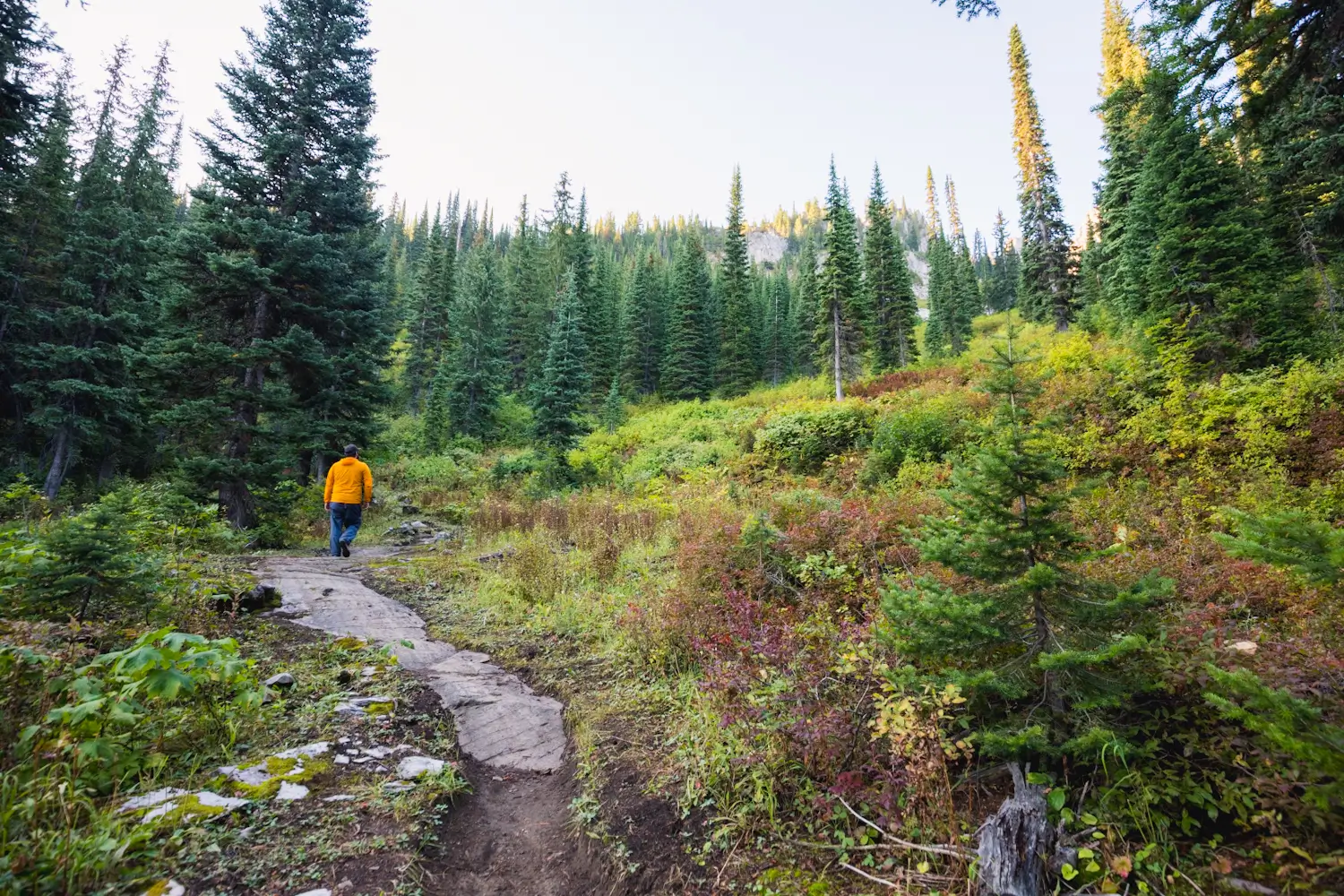
Following the Spineback Trail as it continues to switchback up through the woods and the occasional meadow. I think that’s the bottom end of Spineback Ridge coming into view in the distance.
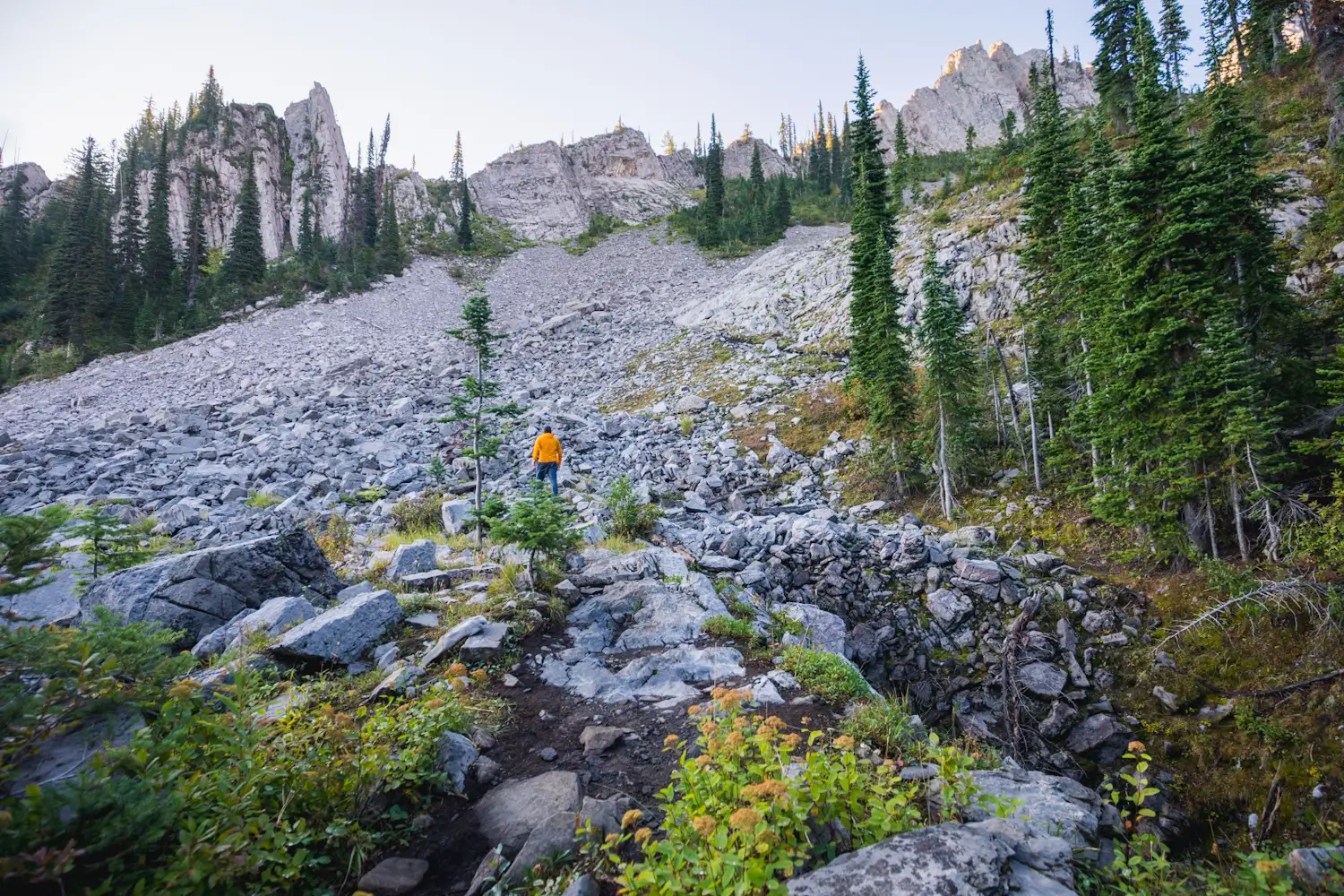
Spineback Ridge is now visible cutting across the top half of this photo. The trail follows up alongside the talus slope to the high point of the ridge, just below Papa Bear. Not the large sinkhole on the left. There are several other sinkholes along the Spineback Trail, but this is the most notable one. Some selfish jerks have thrown their plastic garbage into some of the sinkholes.
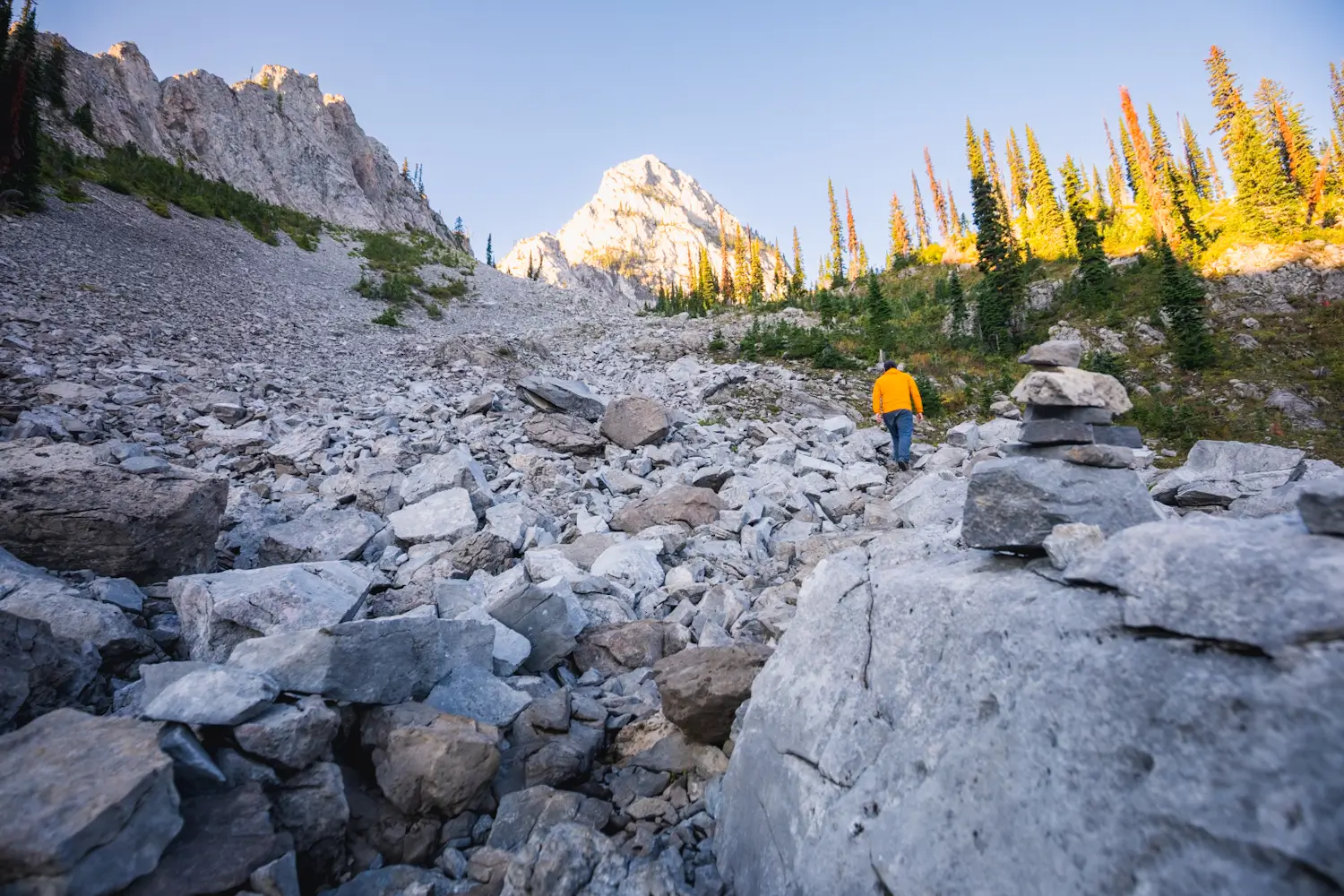
The trail mostly skirts along the side of the talus slope, but occasionally crosses through. When it does the path is still very clear. Here there are a couple of small cairns built to show the way. Unlike some rockstacks built purely for instagram likes, these ones are functional.
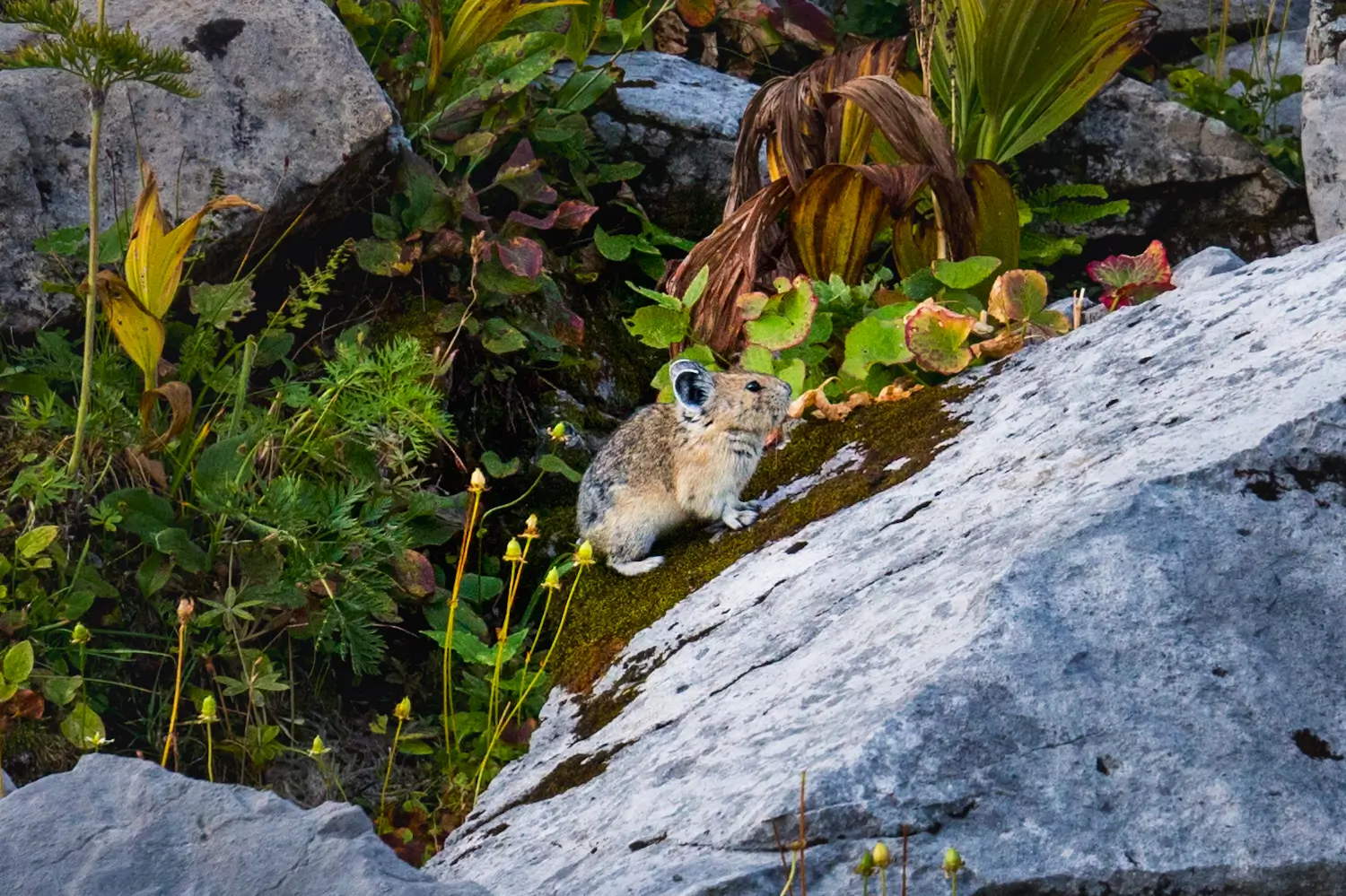
Listen for the squeaking of pikas poking their heads out amongst the rocks. The Spineback Trail had so many pikas – the only place I’ve seen more is behind Lake Agnes in Banff.
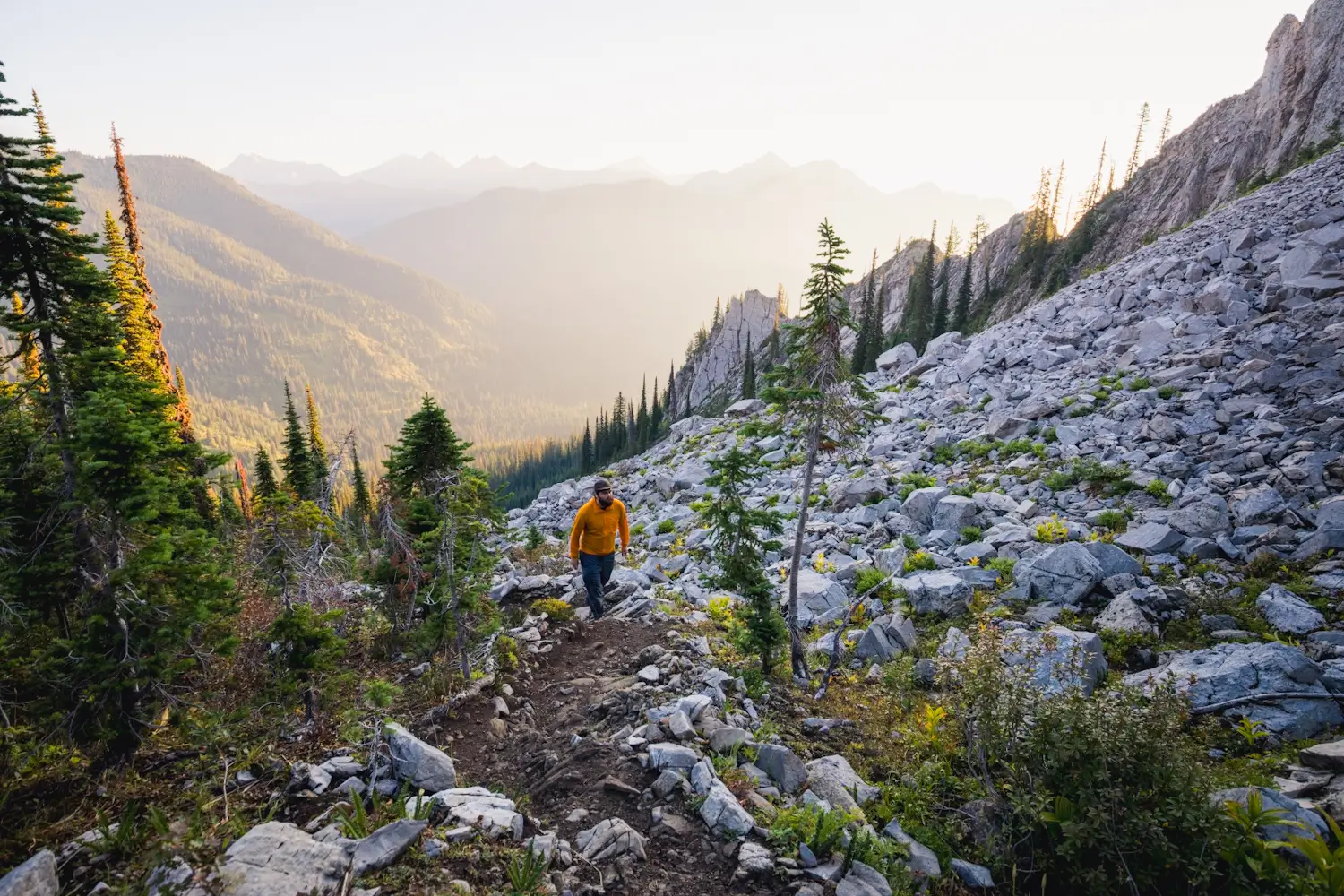
Continuing up alongside the slope. The trail meanders back and forth between the trees and the barren rocky slope but fantastic views down int =o the valley are consistent.

Ancient marine life has been forever preserved in this rock along the trail. Make sure to leave it for other people to enjoy.
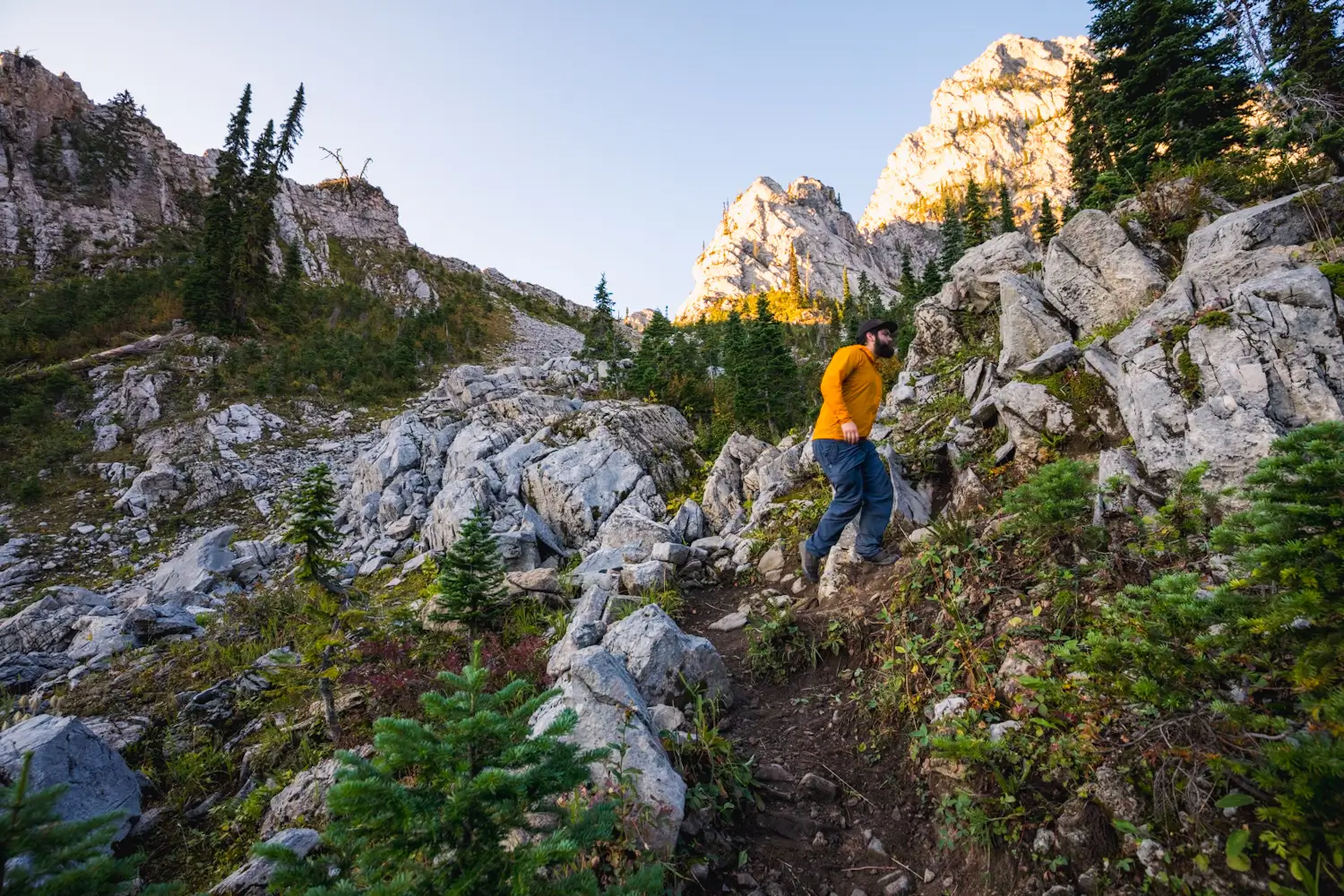
The “Scot Schmidt” Bonsai tree atop Spineback Ridge marks the logical endpoint of the Spineback Trail. It can be seen sticking out of the ridge like rabbit ears at left. The Spineback Trail continues up to the foot of Papa bear before proceeding back down atop the ridgeline a little.
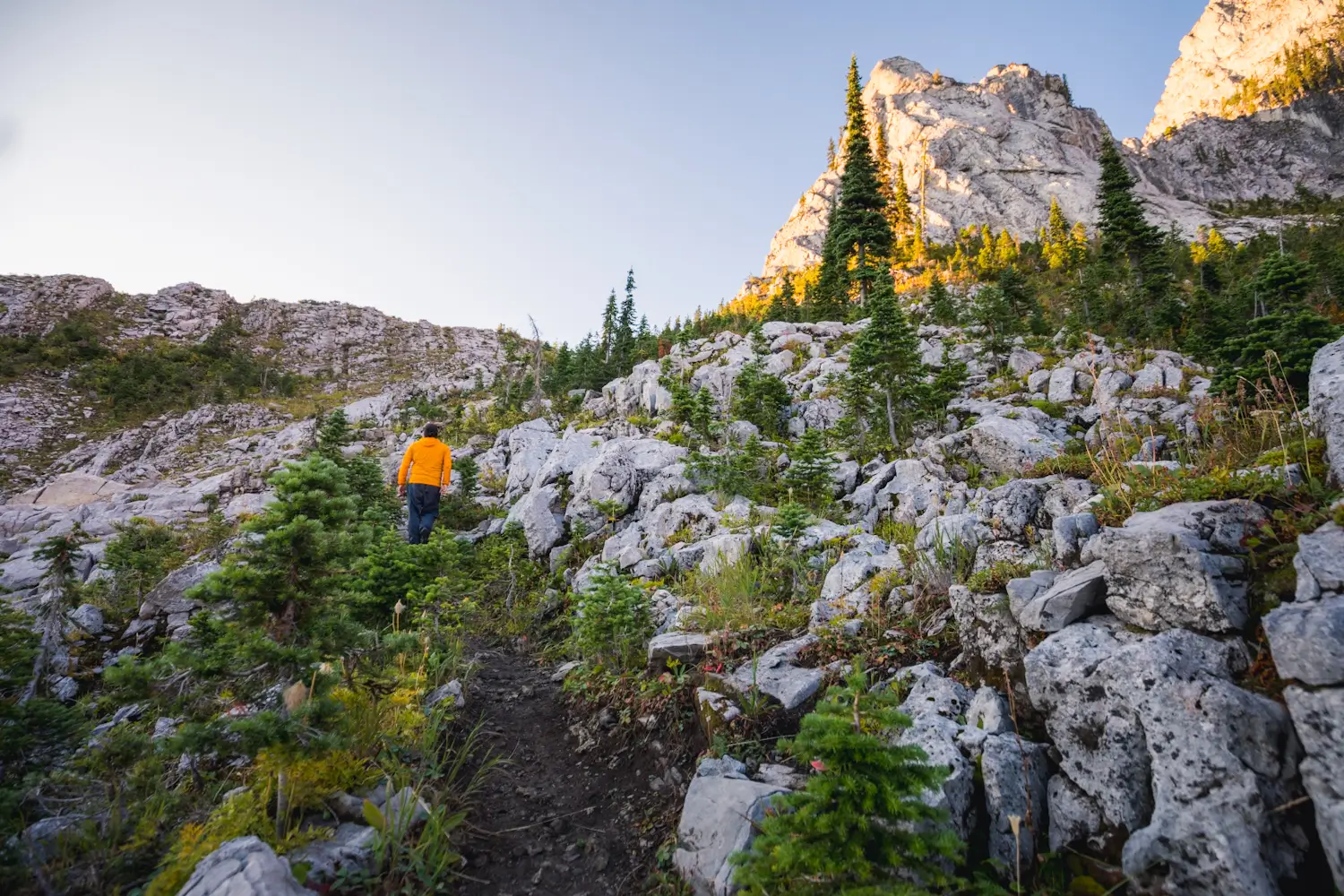
Making a beeline for the pass between Spineback Ridge on the left and Papa Bear on the right.

Looking back towards Big White. I really love the gash visible in the foreground that continues all the way to the distant peak.
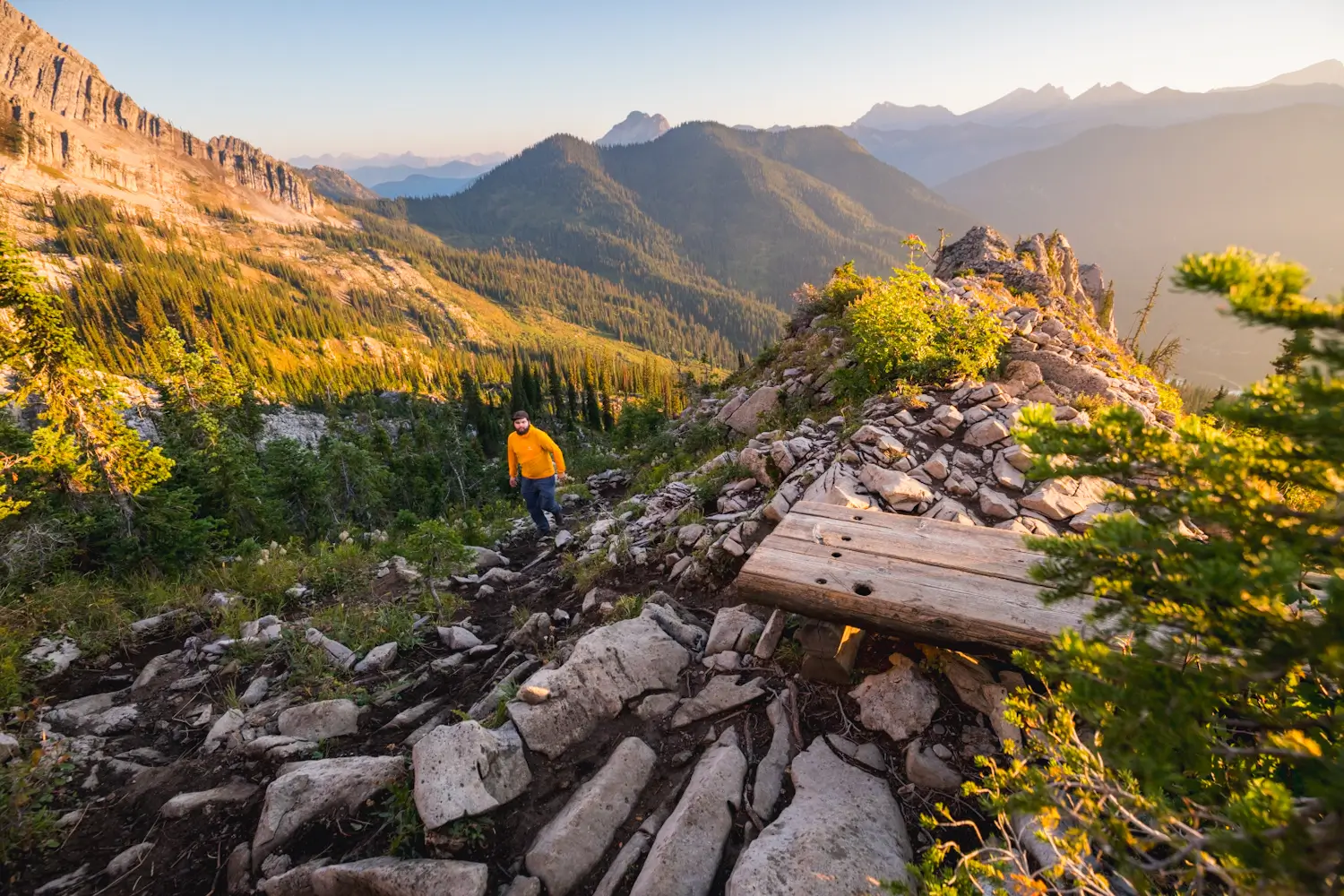
Approaching the top of Spineback Ridge. There’s a bench on top if you want to end your hike at this scenic vista, but I recommend walking down along the ridgeline a little if you’re up for it.
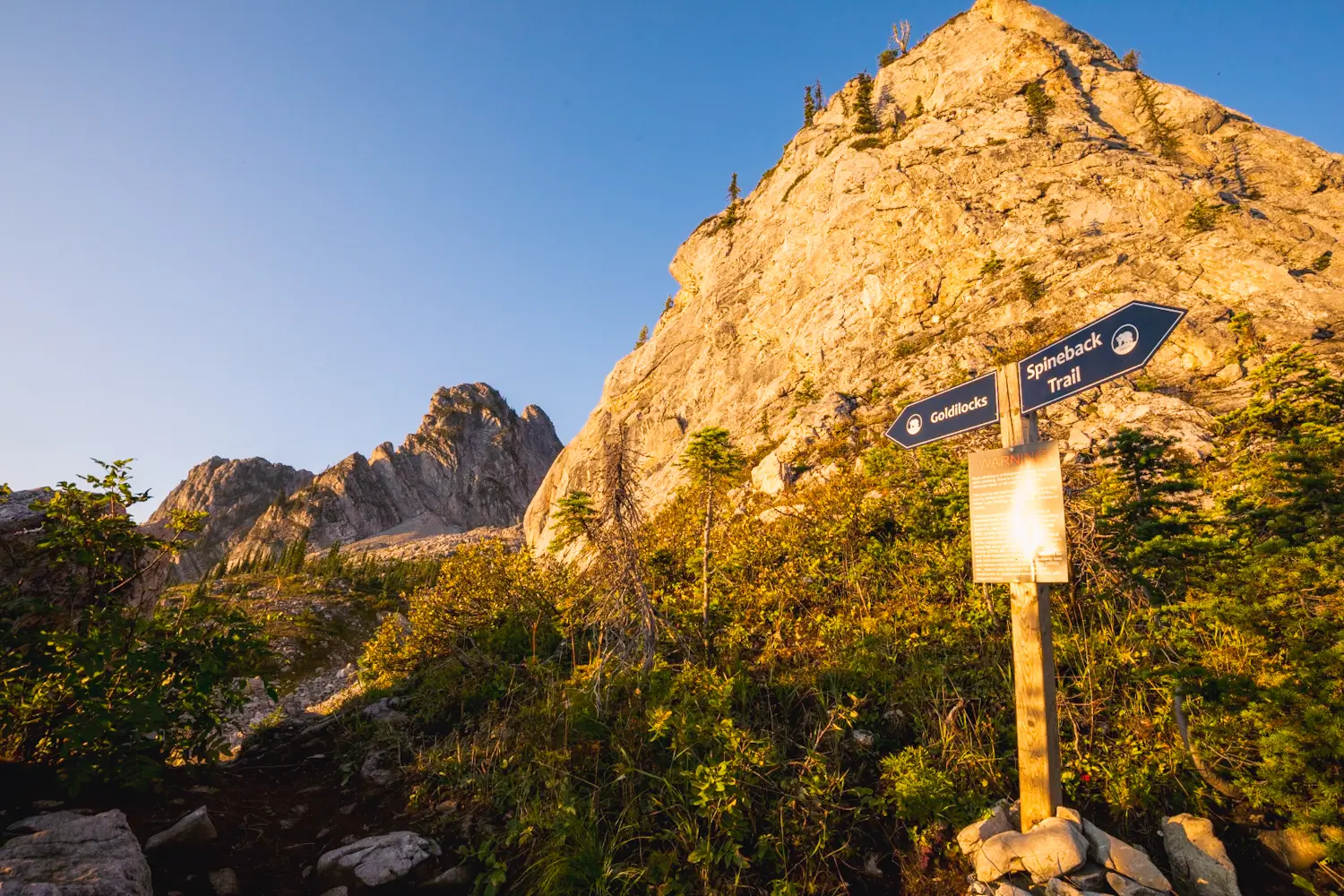
From the bench the trail continues and becomes the Goldilocks Loop, which circles around Baby Bear offering fantastic views in the heart of the Lizard Range.
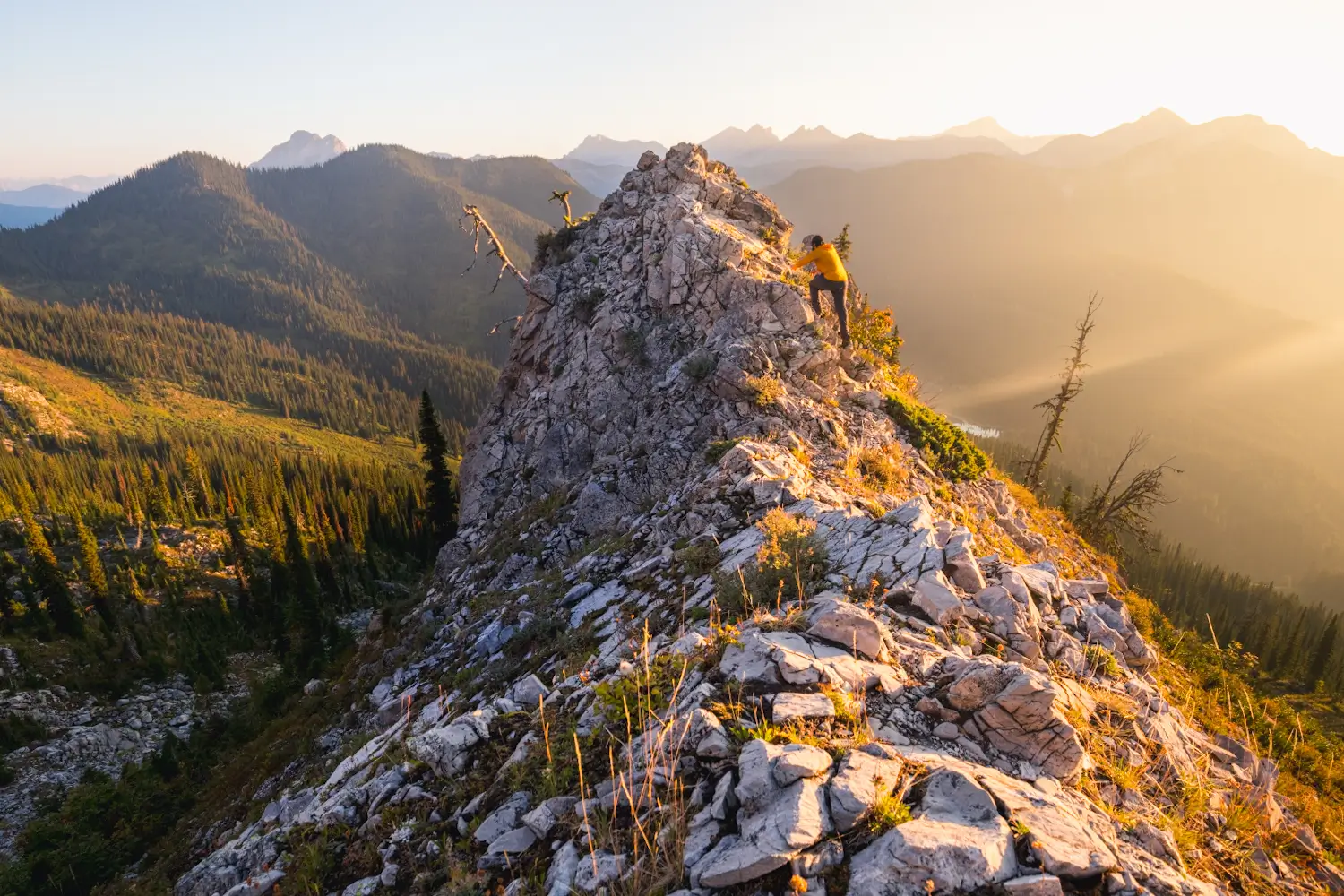
It may not be totally obvious from this photo, but there’s a pretty clear path up to this high point on Spineback Ridge. From here views across the valley are exquisite.
Recommended Hiking Gear



Water is a must whenever I’m hiking, especially if the sun is going to be out. My favourite water filter I’ve used is the Katadyn BeFree 0.6L, which unlike other water filters I’ve used packs up really small and lightweight. For hikes where I know there won’t be any readily available water sources along the way, I make sure to bring my own. The Hydrapak Stow 1L bottle is my go-to, for the same reason that it’s made of a soft plastic that folds up and doesn’t take up any more extra space than necessary in my pack. Finally, Aquatabs are another great option for purifying water, with one tablet being suitable for one litre of water. I previously used the Grayl water filter while travelling internationally, and though I found its hard body more convenient for day to day use and easier to drink from, it has a little too much bulk for my fast-and-light style of hiking.



The secret to all my photos of gorgeous sunset and sunrise mountaintop views? A lot of hiking in the dark. And let me speak from personal experience when I say that the last thing that you want to happen when hiking is to be caught in the dark without a headlamp. I used the Black Diamond Spot 400 for years and it worked great – until I lost it on top of a mountain somewhere. The only downside to it was having to worry about the batteries dying, though there’s also a slightly more expensive version that has a rechargeable battery. Nowadays I’m using the Petzl Actik Core, which is a bit pricier than the more budget-friendly Black Diamond, but is also brighter, more comfortable (in my opinion), and has a hybrid power system that is rechargeable but can also take AAA batteries if needed.
You won’t see me using trekking poles on shorter hikes often – but on long hikes and backpacking trips, as well as certain scrambles, they are an absolute lifesaver. I’ve invested in a high quality ultra-lightweight pair of MSR DynaLock Ascent carbon poles which, while pricey, I don’t regret one bit. If you’re not entirely sure how much use you’re going to get out of a pair of trekking poles, the best budget-friendly option would be the Trekology Trek Z 2.0. Amazon does sell a lot of cheaper Made in China-style trekking poles for cheaper, but these usually are much much heavier and not worth buying.
All the best and most long-lasting cables and power banks I’ve ever owned have been Anker. I once had a phone cable from them that lasted me over three years of daily use! That’s why I keep an Anker PowerCore Essential 20K power bank on me. Like many people I use my phone for a lot of stuff when hiking (checking in with family, using online maps, taking photos, flying my drone) so I like to be prepared for that low battery warning by having a backup power source on me just in case.



The only socks I ever buy for myself are from Darn Tough, and I almost always make sure to wear them when hiking. After years of having no problems only wearing these comfortable and rugged socks for hikes, I accidentally wore a pair of no-name socks on a hike last year and ended up with blisters on both feet. Safe to say I’m back to sticking with the Darn Tough. And the best part? They have a lifetime guarantee, meaning that if they ever wear out you can send them back for a brand new pair. For hiking footwear I go between a pair of lightweight approach shoes for quick and dirty mountain ascents or anything involving scrambling and more heavy-duty boots for longer treks. I’ve worn a couple different versions of the lightweight but super durable Arc’teryx Konseal FL 2 approach shoes for a few years now and am very impressed with the durability. I also really like the thick toecap that keeps me protected every time I stumble into a root or large rock. For longer, tougher, or muddier treks I rely on my LOWA Camino EVO GTX, which I find insanely comfortable and made of very high quality.



I wear my Ar’teryx Gamma Lightweight Pants on every single hike I go on, and on many days when I’m not hiking. After several years of abuse they are still holding together extraordinarily well, with only a few small holes from where I’ve fallen down and some slight stains from being repeatedly coated with mud. They’re lightweight, breathable, and super comfortable. For lightweight and breathable hiking tops I’m a big fan of both the Patagonia Capilene Shirt and the MEC Core Shirt. My Arc’teryx Squamish Hoody shows up in a lot of my photos. It’s super lightweight and packable, and does a great job of cutting the wind while also being pretty breathable. I also have an Arc’teryx Atom Hoody and Arc’teryx Beta LT that I pull out for cooler or wetter conditions.
I hope you enjoyed this guide to hiking Mt Fernie Ridge near Fernie! Feel free to leave any questions in the comment section below or to contact me directly via social media.
